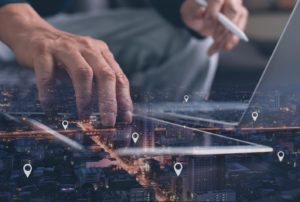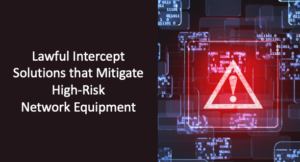
Lawful Intelligence across Cloud and Legacy Networks
The introduction of 5G, high bandwidth services, and new applications mark a new, intensive era of cloud adoption by communication service providers (CSPs) for their
Digital society provides a multitude of data-driven clues for analysts across law enforcement and the intelligence community. Intercepted communications content (CC) and metadata are routinely augmented
With 5G deployments ongoing and 6G some years away, 3GPP Release 18 provides an evolutionary step forward with the first 5G Advanced (5.5G) standard, enhancing performance, efficiency, and flexibility.
Controlling borders is vital to every country’s national interest, from managing immigration to preventing drug smuggling, human trafficking, and terrorism - but physical barriers are no longer enough.
In the coming years, AI is expected to dramatically accelerate the evolution of lawful intelligence, giving law enforcement agencies the ability to efficiently draw insight from data at unprecedented scale.
Quantum Computing may enable communications that do not travel across a network in the conventional sense and endanger traditional encryption methods, carrying critical implications for lawful intelligence.

The introduction of 5G, high bandwidth services, and new applications mark a new, intensive era of cloud adoption by communication service providers (CSPs) for their

The evolution of wide-area networking continues to drive processing out to the network edge. That trend first gained traction with widespread cloud adoption, and it

Many have used the terms uplink and downlink and they may become more colorful when our video calls drop off. But are “uplink” and “downlink”

Having location capabilities in a mobile network was originally an afterthought. The first Global System for Mobile (GSM) network was launched in Finland in 1991

Overview There are two broad types of surveillance capabilities and they are classified as Targeted Intercept and Bulk (Mass) Intercept. Targeted interception, or targeted surveillance,

For the last 50 years, the telecom industry has been happily providing technology for people to make voice calls, and to assure proper accounting they

5G is the most exciting new technology when it comes to wireless communications. Just like when 4G/LTE enabled many application developments that changed the way

In March of 2018 U.S. Congress passed the CLOUD Act, which addressed a growing issue for domestic and international law enforcement, Internet service operators (such

The 5G world is upon us! Which means Law Enforcement Agencies (LEAs) have a headache: 10X to 100X normal data rates are on the horizon. LEAs

“High-Risk” Providers Recently, we’ve heard a lot about “high-risk” network equipment providers and their potential security vulnerabilities. There is a fear they may be used
THE DATA SILO DILEMMA FOR LAW ENFORCEMENT
How to Ingest, Filter and Query 5G Volumes
Webinar Presented by Kevin McTiernan